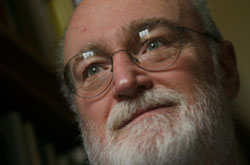Smith and the Ideal Type
As you recall from the first post in this series, on several occasions Robert M. Price has accused Jonathan Z. Smith of not understanding and grossly misapplying Max Weber’s ideal type. For example, in Price’s critique of Drudgery Divine (see: Higher Critical Review), he wrote:
In the same way, Smith seems unwilling to admit the viability of an ideal type of the dying-and-rising god mytheme. If the various myths of Osiris, Attis, Adonis, et. [sic] al. do not all conform to type exactly, then they are not sufficiently alike to fit into the same box, so let’s throw out the box. Without everything in common, he sees nothing in common. [Price 1996]

He has recycled this accusation elsewhere, sometimes copying and pasting the “et.” error, sometimes not. Price is quite proud of his “throw-out-the-box” turn of phrase, as he should be — if he were correct.
Fortunately for us, Smith actually discussed ideal types, so we have a window into his thinking on the matter. In a footnote on p. 99 of Drudgery Divine, he refers to a book by one of his students, Eugene V. Gallagher. In Divine Man or Magician, Gallagher examined the work of Ludwig Bieler, whose studies of the divine man (θεῖος ἀνήρ) type were groundbreaking and insightful, but often misunderstood.
Smith put it this way:
While justifiable criticisms can be brought against both Bieler’s theoretical presuppositions and his methodological procedures, it is sadly revealing and utterly characteristic that most scholars of early Christianity have fundamentally misunderstood his enterprise, in that they have historicized the Typus and viewed the second comparative step as genealogical. E. V. Gallagher, Divine Man or Magician? Celsus and Origen on Jesus (Chico, 1982): 10-18, in the series, SBLD, 64, offers a sophisticated account of Bieler’s enterprise, and usefully compares his work to Max Weber’s notion of the ‘ideal type’. [Smith 1990, p. 99]
Let’s examine the two fundamental errors Smith has identified above. First, some scholars forgot (did they ever know?) that the ideal type is a modern construct. The “theios aner” exists not in the historical past, but in the realm of ideas. Hence, to criticize Bieler’s type as an anachronism misses the point entirely. Second, when Smith criticizes scholars on the basis of genealogy, he means they’ve jumped the gun on issues of dependence and who borrowed from whom. The second step should be that of analogy, which includes seeking evidence of both difference and similarity. In To Take Place, he wrote: Continue reading “Did Jonathan Z. Smith Really Not Understand Ideal Types? (Part 3)”
